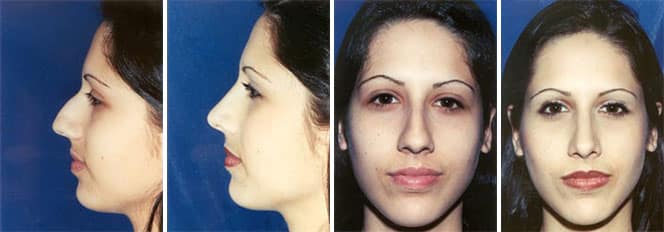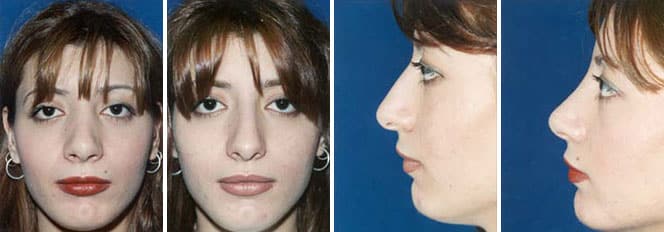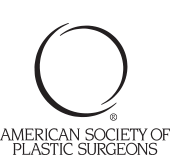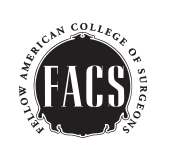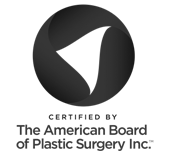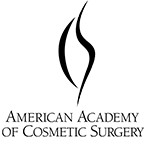The shape and size of your nose can dramatically affect your appearance. For those who are unhappy with the appearance of the nose, nasal reshaping surgery can make a tremendous difference in your outlook and self-image. This surgery is known as rhinoplasty, and it can improve a variety of aesthetic nasal characteristics such as nose size, shape, tip appearance, bridge angle, nostril span, nostril size, and angle. Rhinoplasty can also correct birth deformities, reverse the effects of an injury, and relieve certain types of breathing problems.
Schedule Your Consultation TodayAchieved With Rhinoplasty

REFINED AND ATTRACTIVE NOSE
Most of the time, people take issue with a specific aspect of the nose. For example, they may feel that the size of the nose is too large, the bridge has a bump, the nostrils are too wide set, or the tip is droopy. These individual characteristics can make your entire nose look unattractive in your opinion.
Rhinoplasty refines the nose by addressing these specific issues. If the bridge has a hump, rhinoplasty can flatten it. If the nose is too flat, rhinoplasty can build it up. If the nostrils are too wide, rhinoplasty can narrow them. Correcting specific aspects of the appearance of the nose through rhinoplasty will make the nose more attractive and refined.

BALANCED FACIAL FEATURES
The shape, size, and appearance of the nose can affect the balance of the entire face. For example, if the nose is overly large, the rest of the features are dwarfed by comparison. If the nose is crooked, the eyes and mouth might look asymmetrical or offset in conjunction with it. If the nose is too short or too long, there is a disunion among the facial features that can be off-putting. The appearance of the nose can even make it look as though the ears are disproportionate.
Rhinoplasty improves the appearance of the nose by bringing it into balance with the rest of the facial features. Resizing and refining the nose so that it blends well with the eyes, mouth, cheeks, and ears creates a natural-looking facial harmony. Achieving this balance makes it so that the nose no longer stands out for its flaws but contributes to a natural and aesthetically pleasing facial beauty.

IMPROVED NASAL BREATHING
For some people, the shape and structure of the nose can interfere with nasal breathing. In an ideal nose, the nasal septum—the internal wall that separates the nostrils—is straight with completely open airways on either side. Unfortunately, many people have a crooked or deviated septum, which means that this wall is not straight. A deviated septum can create a blockage on one side, making it harder to breathe through the nose because the affected individual is only able to breathe through one nostril.
Rhinoplasty can alter the structure of the nose and straighten a crooked septum. Straightening out the septum eliminates the blockage and allows air to flow freely into and out of the nose. Affected patients typically notice an immediate improvement in nasal breathing right after surgery, even with the swelling associated with recovery.
What Does Rhinoplasty Entail?
PROCEDURE
Rhinoplasty is conducted using a personalized approach to correct the specific issues requested by the patient. Dr. Taylor advises his patients to expect the procedure to last one to two hours or possibly even three hours for those who require more extensive surgery.
Typically, rhinoplasty procedures are done as an outpatient procedure under general anesthesia. Once the general anesthesia has taken effect, the skin of the nose is separated from its supporting framework. Bone and cartilage are sculpted to the desired shape, the septum may be straightened, and other refinements are made as necessary. Finally, the skin is redraped over the new nasal framework. Splints are applied to help the nose maintain its newly improved shape as the tissues heal.
RECOVERY
Patients should plan for at least one week of initial recovery. The splints will usually be removed after one week, at which point patients can resume their normal schedules. Swelling and bruising are common and mostly subside within a few weeks after surgery. It is important to avoid strenuous activities, especially those that could result in injury to the nose, for at least four to six weeks after rhinoplasty. Some internal swelling will continue for up to one year.
SCARS
Scarring after rhinoplasty is minimal to non-existent. Most of the work is performed inside the nose where any resulting scars will not be visible. Patients may have a small scar at the base of the narrow strip of tissue that separates the nostrils. This scar will be at the natural crease and will be largely unnoticeable. Any scarring will fade over time.
COST
The cost of rhinoplasty varies according to the techniques used, the surgeon’s experience, location, anesthesia, and other related expenses. Dr. Taylor is an experienced rhinoplasty surgeon and applies careful attention to the details for all rhinoplasty patients. Patients feel assured that they are receiving the best treatment possible with Dr. Taylor.
PAIN
Rhinoplasty is performed under general anesthesia, which saves patients from experiencing any pain or discomfort during the procedure. During recovery, patients may experience temporary discomfort due to swelling. Oral pain medications can ease any discomfort, which typically peaks around the second or third day after recovery and subsides after that. Discomfort will diminish significantly as the swelling begins to subside.

Are you ready for your transformation?
Schedule your free consultation today!
Schedule Your Consultation TodayFaqs
-
What are the requirements to undergo rhinoplasty?
To undergo rhinoplasty, the nose cartilage will need to be mature enough to handle the surgical manipulation of the tissues. Additionally, the patient should be emotionally mature enough and physically healthy for the procedure. Realistic expectations are required for all candidates. Candidates should also be non-smokers or willing to quit for at least a few months surrounding their surgery. Rhinoplasty is typically not recommended until patients are at least in their mid-teen years.
-
How will rhinoplasty affect my ability to breathe through my nose?
Patients with a deviated septum that is straightened during rhinoplasty will experience an immediate improvement in nasal breathing, though temporary swelling will somewhat block inhalation. Patients with a straight nasal septum will experience a temporary inhibition of free nasal breathing due to swelling after rhinoplasty. Breathing should become easier as soon as one week after surgery. Patients who previously had a deviated septum often discover that by one or two months after surgery, breathing through the nose is easier than it ever was before.
-
What results can I expect?
Rhinoplasty will resolve the issues you describe to Dr. Taylor in your consultation and will refine your nose so that it looks more natural, attractive, and balanced. Most patients report tremendous satisfaction with the results of rhinoplasty. Often, the change looks so natural that others around them don’t ask them about it, which speaks to the subtle effectiveness of rhinoplasty when performed by our skilled rhinoplasty surgeon.
-
How long will it take to see the final results?
Due to internal swelling, the appearance of the nose may have subtle changes for up to one year after surgery. Typically, swelling of the nasal bridge will resolve within three months, but nasal tip swelling can last up to a year. By one year after the procedure, the overall final results should be visible.
-
How long will the results last?
The results of rhinoplasty are permanent.
